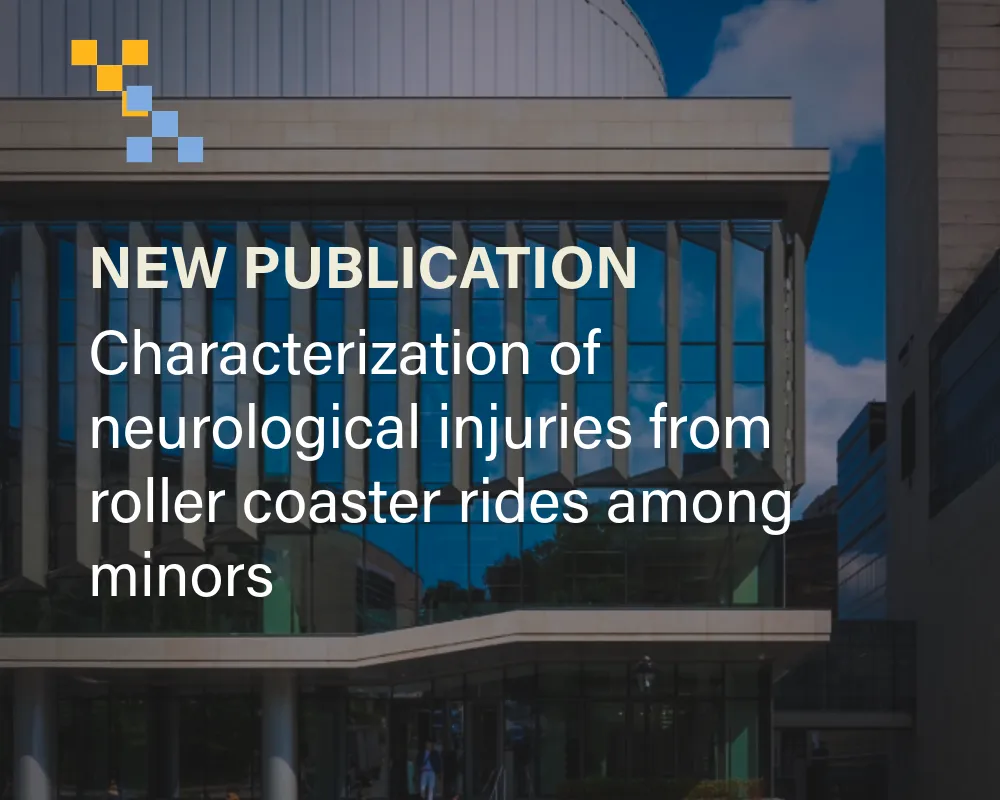Written in by SCOLI
A comprehensive study analyzing 20 years of data reveals that while roller coaster injuries in children are rare, certain vulnerability factors make pediatric riders more susceptible to neurological injuries than adults.
Study Overview
This study, published in the American Journal of Emergency Medicine, analyzes 20 years of National Electronic Injury Surveillance System (NEISS) data to characterize neurological injuries from roller coaster rides among children under 18 years old. The goal was to determine the incidence, types, and severity of roller coaster–related neurological injuries in children.
Key Statistics
- 6,382 total pediatric emergency visits (2004–2023)
- 319 average annual emergency visits
- 44.6% cervical spine injuries
- 30.6% head injuries
Key Findings
- Low overall injury rate: With ~385 million people riding roller coasters annually in North America, pediatric emergency visits average about 319 cases per year.
- Most common injuries: Muscular strain (47.3% of cases), primarily affecting the neck, followed by cervical spine injuries.
- Age factor: Concussion risk increases significantly with age (p = 0.04). Median age is 14 years for cranial injuries vs. 12 years for spinal injuries.
- Gender distribution: Females account for 64.6% of all cases, 54.6% of concussions, and 64.4% of spinal injuries.
Patient Demographics
Average age: 12.2 years (weighted mean). Females comprise 64.6% of all cases.
| Demographic | National Weighted Estimate | Percentage (%) |
|---|---|---|
| Sex of Patient | ||
| Male | 2,259 | 35.4 |
| Female | 4,123 | 64.6 |
| Race of Patient | ||
| White | 2,594 | 40.7 |
| Not Stated in ED Record | 2,206 | 34.6 |
| Black/African American | 890 | 14.0 |
| Other | 531 | 8.3 |
| Asian | 96 | 1.5 |
| American Indian/Alaska Native | 65 | 1.0 |
Injury Distribution
By Location
| Injury Location | National Estimate | 95% CI | Percent of All Injuries (%) |
|---|---|---|---|
| Cervical Spine | 2,848 | 1,494–4,201 | 44.6 |
| Head | 1,956 | 1,280–2,631 | 30.6 |
| Thoracic Spine | 827 | 382–1,273 | 13.0 |
| Lumbar Spine | 751 | 310–1,193 | 11.8 |
By Type
| Injury Type | National Estimate | 95% CI | Narrative Count |
|---|---|---|---|
| Strain | 3,108 | 1,482–4,733 | 87 |
| Closed Head Injury (excl. concussion) | 809 | 350–1,267 | 48 |
| Concussion | 723 | 374–1,072 | 43 |
| Unspecified Back Pain | 659 | 305–1,013 | 37 |
| Sprain | 436 | 89–782 | 28 |
| Contusion | 235 | 0–478 | 5 |
| Headache | 178 | 0–362 | 14 |
| Torticollis | 125 | 0–263 | 6 |
| Presyncopal Episode | 81 | 0–240 | 1 |
| Compression Fracture | 14 | 0–32 | 2 |
| Hematoma | 5 | 0–15 | 1 |
| Aphasia | 5 | 0–15 | 1 |
| Cervical Arthralgia | 5 | 0–15 | 1 |
Head injury breakdown: Of head injuries, 36.6% were concussions and 41.3% were closed head injuries. Of muscular strains, 70.3% affected the neck.
Mechanisms of Injury
Of 274 cases, 71 included specific mechanisms:
- Hitting safety bar: most common (~400 estimated cases)
- Excessive head movement: second most common (~190 estimated cases)
- Mixed/unspecified causes: (~250 estimated cases)
- Hitting head on seat: (~175 estimated cases)
- Hitting head with another person: least common (~50 estimated cases)
Methodology
Data source: NEISS database using probability sampling from ~100 U.S. emergency departments. Records include age, sex, injured body part, diagnosis, and narratives.
Study period and selection:
- Time frame: 2004–2023 (20 years)
- Population: Children under 18 years old
- Inclusion: Head, neck, and spine injuries from roller coaster rides
- Exclusion: Other amusement park attractions (e.g., water rides)
Statistical analysis:
- Weighted survey analysis for national estimates
- 95% confidence intervals
- Univariate logistic regression for age relationships
- Pearson’s chi‑square for gender relationships
- Statistical significance set at p < 0.05
Safety Context
Industry Standards
- Annual ridership: ~385 million people in North America
- Safety limit: maximum ~6g for short durations
- Regulation: independent institutions maintain ASTM standards
- Force variation: recommended maximum decreases with longer exposure time
Previous Research Findings
- Roller coaster forces similar to a ~5‑mph car bumper collision
- Accelerations ~19× below injury threshold
- Forces well below subdural hematoma threshold
- Current safety standards appear effective
Pediatric Vulnerability Factors
Children may be more vulnerable to roller coaster injuries due to anatomical and physiological differences.
Anatomical Risk Factors
- Head‑to‑body ratio: disproportionately large, increasing neck stress
- Neck muscles: weaker and less developed
- Ligament laxity: more flexibility but less stability
- Skull: thinner, providing less cushioning
- Brain development: underdeveloped cells more susceptible to contusion
Spinal Differences
- Higher water content in intervertebral discs
- Unfused growth plates
- Shallow facet joints
- Anteriorly wedged vertebral bodies
- Underdeveloped uncinate processes
- More pliable and flexible spine overall
Comparative risk: Children show 47% incidence of whiplash‑associated disorder in motor vehicle crashes vs. 30% in adults, indicating higher susceptibility to head/neck forces.
Clinical Implications
- Overall risk assessment: Based on 319 injuries per 385 million annual pediatric riders, per‑ride risk is extremely low, supporting current safety regulations.
High‑Risk Presentations
- Older children (teenagers) at higher concussion risk
- Females represent majority of injuries
- Previous concussion: ~4× higher likelihood of repeat injury
Emergency Department Considerations
- Most injuries are minor muscular strains
- Concussions represent a significant portion of head injuries
- Serious injuries (e.g., compression fractures) are rare but do occur
- Need for improved diagnostic specificity
Recommendations
For Healthcare Providers
- Maintain high suspicion for concussion in teenage riders
- Consider pediatric anatomical vulnerability factors
- Improve documentation of mechanisms and severity
- Screen for previous concussion history
For Industry
- Focus biomechanical research on pediatric‑specific factors
- Consider ergonomic improvements for smaller riders
- Develop age‑specific safety warnings
- Investigate safety bar design optimization
Future Research
- Detailed biomechanical analysis of specific ride types
- Investigation of ride phase‑specific injury mechanisms
- Longitudinal outcomes for pediatric roller coaster injuries
- Comprehensive hospital record review for injury severity
Conclusions
- Roller coasters have very low injury rates in children, and current safety regulations appear effective in preventing serious injuries.
Key points:
- 319 average annual pediatric emergency visits nationwide
- Most injuries are minor muscular strains affecting the neck
- Cervical spine and head are the most commonly affected regions
- Serious injuries like compression fractures are rare
- Concussion risk increases with age
- Females represent the majority of injured riders
Clinical significance: Roller coasters are generally safe for children; understanding pediatric‑specific vulnerability factors is crucial for optimizing safety measures and care for injured young riders.
Study Information
- Authors: Janam Patel, B.S., Ben Carnovale, B.S., William Rabon, B.S., Rohit Prem Kumar, M.D., Raj Swaroop Lavadi, M.D., Manan Shah, M.D., James Mooney, M.D., Michael M. McDowell, M.D., D. Kojo Hamilton, M.D., Nitin Agarwal, M.D.
- Institution: University of Pittsburgh School of Medicine and Medical Center
- Publication: American Journal of Emergency Medicine 98 (2025) 309–314
- DOI: 10.1016/j.ajem.2025.08.035
- Corresponding Author: Nitin Agarwal, M.D. (nitin.agarwal@upmc.edu)

Share this article:
Published
Posted by
SCOLI


